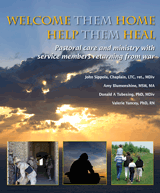by Michelle Peterson
Suicide and Addiction
Suicide can destroy lives, but for all of its power it is still one of the least talked-about dangers facing Americans today. There is such a stigma associated with self-harm that many people are reluctant to talk about it or even face that a loved one might be in danger. It’s extremely important to raise awareness about suicide so that friends and family of those at risk will know what to look for.
Some of the most at-risk individuals include people suffering from PTSD, or post-traumatic stress disorder include: people living with depression or other mood disorders; veterans; and those living with substance abuse issues. Drugs and alcohol play a big part in suicide rates for teens and adults in the U.S., in part because they both mask and exacerbate the symptoms of serious mood and mental health disorders. In fact, individuals who suffer from alcohol addiction are six times more likely to commit suicide than the general population.
“The connection between substance abuse and suicide has not been sufficiently well understood. People in both the mental health and substance abuse fields have likely had experiences that would demonstrate the connection, but I think that probably few appreciate the magnitude of the relationship between substance abuse and suicide,” says SAMHSA’s Public Health Adviser Richard McKeon.
Drugs and alcohol may be used to lighten the mood at parties, but for some, these substances lean toward the darker side of a mood and heighten feelings of hopelessness because they alter the way the brain works. When you ingest a drug, it interferes with the way neurons both send and receive information, as well as the way they process it. Some drugs can even make neurons malfunction, causing them to release overwhelmingly large amounts of neurotransmitters. This extra commotion sometimes causes disruptions in neural communication — in other words, your brain has trouble sending signals and commands to your body.
For some, this can explain that dizzy feeling you get after having too much to drink. For others, it offers insight into why it might be difficult to register what someone else is saying to you after you’ve ingested large quantities of cocaine. But it offers interesting perspective into the idea of using drugs and alcohol as a buffer in social situations: though for many it can put an anxiety-ridden mind at ease, for some it can actually make socializing even more difficult. When you’re having trouble functioning properly, it makes interactions with others awkward at best, and impossible at worst. This certainly does no favors for those longing for social connection but dependent on substances to find it, and may even lead to added distress over repeated failed attempts to “fit in.”
Drug and alcohol use also causes judgement to be impaired, and the tendency to act upon a thought without thinking it through clearly means that once the individual feels like suicide is the only option, they are that much more likely to act upon it. For this reason, it’s imperative that individuals who suffer from addiction do not have access to weapons, especially guns, and that they have a strong social and familial support system. Because substance abuse is a destroyer of relationships, this can be difficult to achieve.
 Because isolation is common in people living with a substance abuse disorder, it’s important for friends and family to know what to look for where suicidal thoughts are concerned. Warning signs may not be overt, but there will likely be some indication that the individual is thinking about self-harm. These can include:
Because isolation is common in people living with a substance abuse disorder, it’s important for friends and family to know what to look for where suicidal thoughts are concerned. Warning signs may not be overt, but there will likely be some indication that the individual is thinking about self-harm. These can include:
- Talking about or writing about death, especially their own
- Giving away belongings
- Making plans to see family members they haven’t seen in a long time
- Engaging in risky behavior
- Getting into legal trouble
- Suddenly acting happy or hopeful after a long down period
- Violent episodes
If your loved one is exhibiting any of these behaviors, don’t second-guess your instincts; talk to them. Start a conversation by saying you’re concerned about them and ask, flat-out, if they are thinking about taking their own life. Do not be judgmental or use negative statements, such as “You’re not thinking about doing something stupid, are you?” Starting the conversation that way will likely only push the individual away and prompt them to deny their true feelings.
You also want to make sure not to demean the idea of suicide by calling it selfish, dramatic, or cowardly. Remember, it’s OK for you to have strong feelings about taking one’s own life, but the focus needs to be on respecting the agony your loved one is in. Of course you want to deter them, but don’t write off the action of suicide (or the mere thought of it) as silly, because the fact is, suicide isn’t silly. If your loved one is contemplating it, they likely feel as if they’ve exhausted all other options. It isn’t silly to feel so devastatingly sad that you feel life isn’t worth living, so be incredibly cautious to make sure you don’t send that message even unintentionally.
Instead, let them know you’re worried for their wellbeing and give them an opening to talk. Ask questions, but be sensitive. Sometimes simply checking in on how someone is coping with a major trauma — death of a spouse, job loss, or struggling with an addiction, for example — is the best route to open up the conversation. Don’t make accusations about how you think they feel, but don’t be deterred if they don’t immediately open up. Continue to talk to them about what’s going on, and remind them that you care about them and would be happy to help in any way you could. Don’t assume they already know; often, those in the depths of major depression are overwhelmed with their pain, and those with an addiction, especially, may be convinced that no one will care. Making your love and genuine concern for someone’s wellbeing can be the ultimate difference between an honest, productive conversation and a shutout.
It may be difficult to keep your feelings neutral; this is an emotional subject, and suicide is something many people feel strongly about. However, it’s important to show your loved one that you are there to help, not to judge. Offer to help them find a counselor, helpline, or rehab center and let them know they are not alone. Often, addiction can make the user feel as though they have no one on their side, no one to turn to, and it can lead to actions that push friends and family away. Let them know you’re there for them.
If self-harm seems imminent, do not leave your loved one alone. Call for help immediately and remember that there is only so much you can do. Sometimes, it’s up to the professionals to step in and take over.
Michelle Peterson has been in recovery for several years. She started RecoveryPride.org to help eliminate the stigma placed on those who struggle with addiction. The site emphasizes that the journey to sobriety should not be one of shame but of pride and offers stories, victories, and other information to give hope and help to those in recovery.
Photo via Pixabay by 422694




